
MoMA has become our favorite cultural spot to frequent during the pandemic. The Museum, which in regular times draws millions of visitors from around the world, has become ours—New Yorkers—since it reopened in the spring. Its admission is based on an advance timed ticket only, allowing for extremely limited capacity. Now we can spend time in relative peace and privacy among the Museum’s extraordinary holdings. It is airy and fresh, and its architecture is finally making its shining presence known through the vacant modernist spaces of the newly expanded buildings, recently completed by Diller Scofidio + Renfro.
Today, we visited the exhibition ‘Automania,’ which illustrates the freedom and spirit at the core of the automobile. It consists of two parts, one on the first-floor lobby and Sculpture Garden, and the other on the third floor. The title was inspired by a 1963 Oscar-nominated animated British film ‘Automania 2000,’ by John Halas, which shows how the year 2000 was imagined by those in 1963, as they envisioned the future of motoring and criticized the lack of proper roads and parking facilities. (Sound familiar?) Based on George Orwell’s Animal Farm, the film was a satiric commentary on America’s consumer culture and its obsession with cars. While the show is largely focused on the second half of the 20th century, its relevance lies in the way in which pandemic has brought new and conflicted feelings toward the car: compulsion, fixation, desire, and empowering the car as the preferred form of transportation when aircrafts lost their safety and allure.
Besides the critical narrative, I found the nine cars from the collection of the Museum to be beautiful, precious style icons: a 1963 Jaguar E-Type Roadster; a 1990 Ferrari Formula 1 racer; a 1973 Citroën DS sedan known as “The Goddess;” a 1952 Jeep M-38A1; a 1965 Porsche 911 Coupe; a 1957 Fiat 500f; an 1889 Ferrari Formula 1 Racing Car; a 1960 Airstream Bambi Travel Trailer; a 1946 Cisitalia 202 GT; and a 1938 Volkswagen Beetle Type 1 Sedan. Also on display was a 1963 aluminum-skinned Airstream Bambi Trailer, named by the company founder Wally Byam during his 14,000-mile caravan through Africa in 1960, for a tiny deer known as “O’Mbambi” in a Bantu dialect, which became a fixture of American highways, reliably towed by the family station wagon.
The other material—paintings, posters, films, road signs—demonstrate the role of the car as a transformative agent of change. The art and posters on the walls – by Henri de Toulouse-Lautrec, Ashley Havinden, Andy Warhol, Francis Picabia, and Giacomo Balla – come to demonstrate the fascination with the car, as well as examine the different ways in which the automobile was perceived throughout the 20th century.
The exhibition is a joy not exclusive to car lovers. The Sculpture Garden is certainly NYC’s most delightful oasis. From the time it was born in the 30s, it acted as an outdoor gallery, and it has hosted some great shows over the years. In fact, the first time an exhibition of cars was installed in the Garden was 1951, when curator Arthur Drexler presented ‘8 Automobiles,’ the first show dedicated to automotive design in any art museum, staged in the context of the postwar consumer culture boom and the new role of the car in suburban America.
Automania will close on January 2, 2022. All images courtesy The Museum of Modern Art; above: Installation view of Automania, The Museum of Modern Art, New York, July 4, 2021 – January 2, 2022. © 2021 The Museum of Modern Art. Photo: Denis Doorly.


52 × 52 × 116 7/8″ (132.1 × 132.1 × 296.9 cm) The Museum of Modern Art, New York. Gift of Fiat Chrysler Automobiles Heritage 381.2017
Sculpture Garden, 07/04/21 – 10/11/21.


Photo: Denis Doorly

Volkswagen Type 1 Sedan designed 1938 (this example 1959) Steel, glass, 59 1/4 × 61 × 160 1/2″ (150.5 × 154.9 × 407.7 cm); The Museum of Modern Art, New York. Acquired with assistance from Volkswagen of America, Inc.

49 x 57 5/8 x 158″ (124.5 x 146.4 x 401.3 cm); The Museum of Modern Art, New York. Gift of the manufacturer 409.1972.
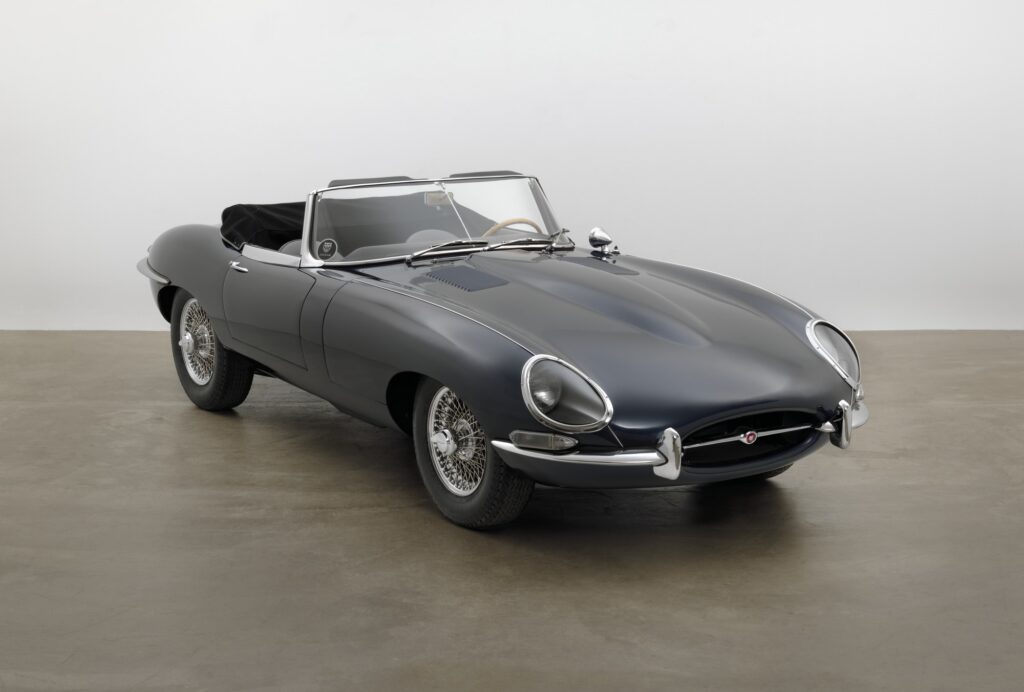
designed 1961 (this example 1963); Steel unibody construction with fabric top; 48 × 66 × 175″ (121.9 × 167.6 × 444.5 cm), The Museum of Modern Art, New York. Gift of Jaguar Cars 113.1996.
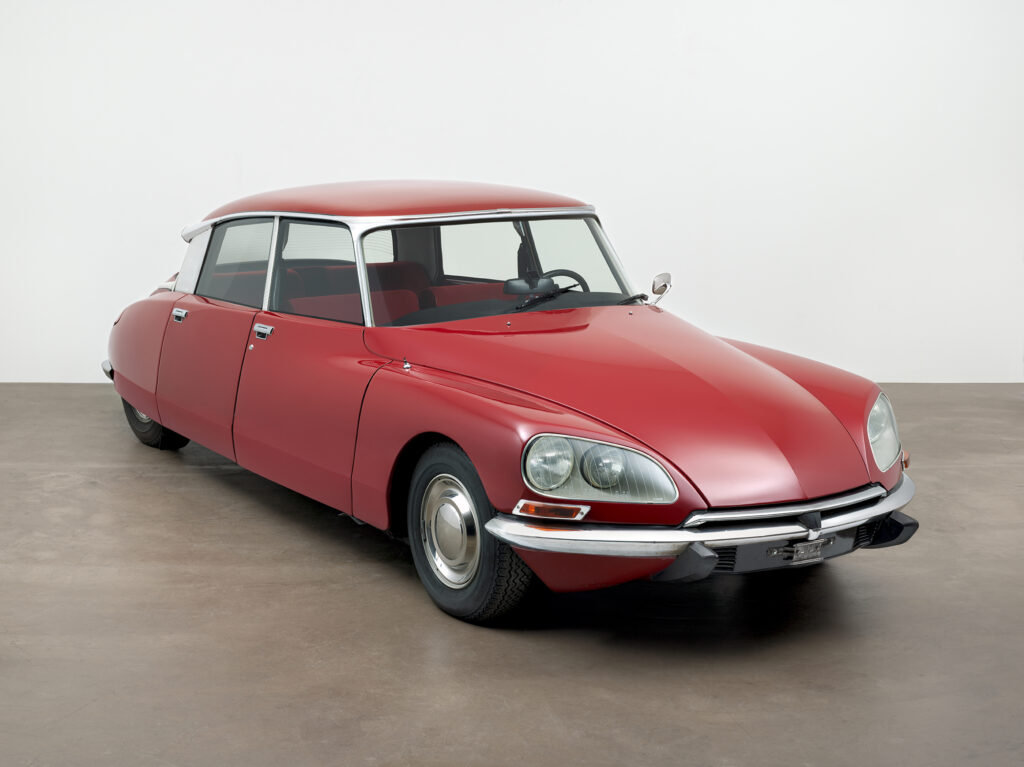
DS 23 sedan, designed 1954-1967 (this example 1973), Steel body with fiberglass top, 61 × 71 1/2 × 191″ (154.9 × 181.6 × 485.1 cm)
The Museum of Modern Art, New York. Gift of Christian Sumi Zürich and Sébastien and Pierre Nordenson 75.2018 Sculpture Garden, 07/04/21 – 10/11/21.
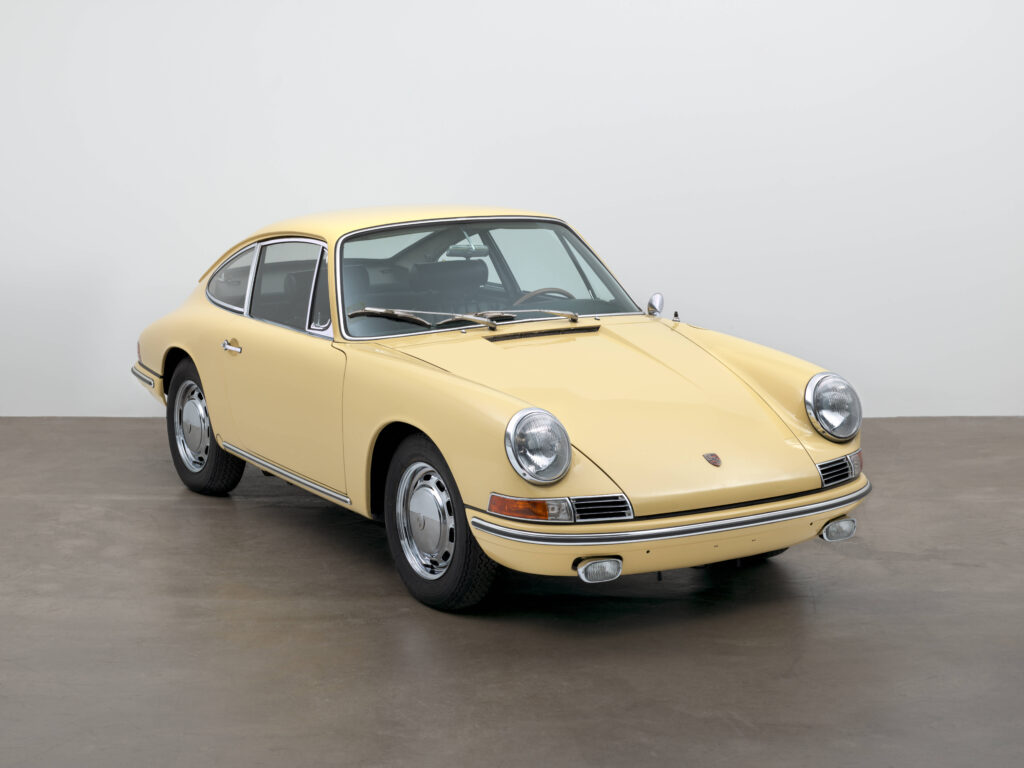
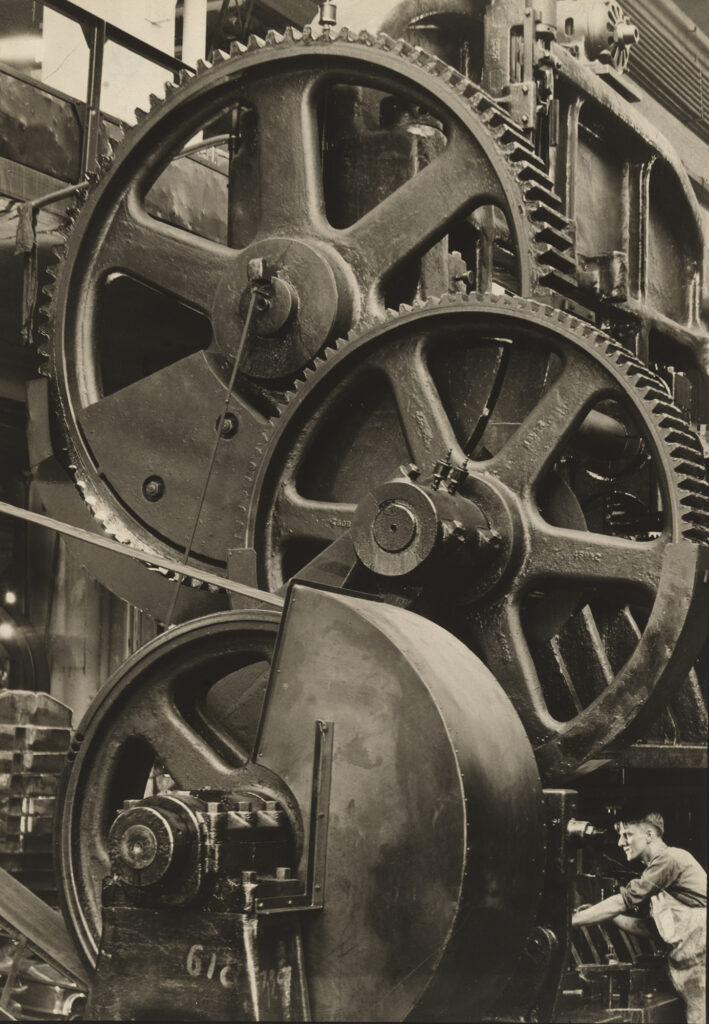
12 7/8 × 9″ (32.7 × 22.8 cm); The Museum of Modern Art, New York. Gift of the artist, 149.1974
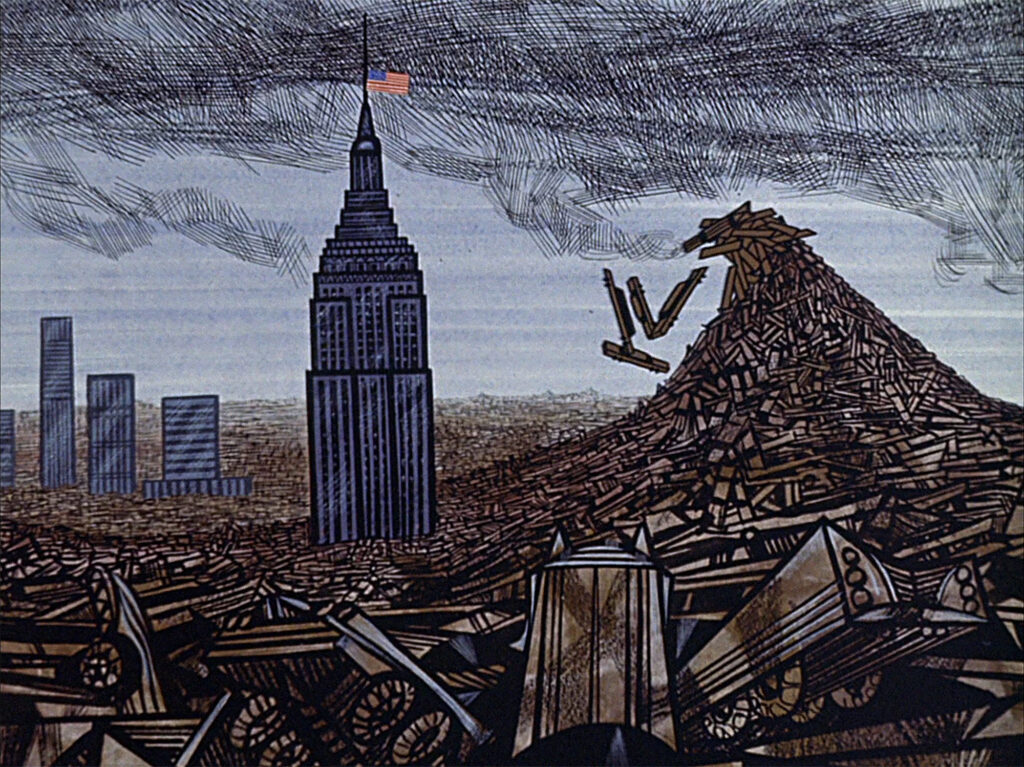
10 min. The Museum of Modern Art, New York, 1978 LN2021.207.AV Projection

